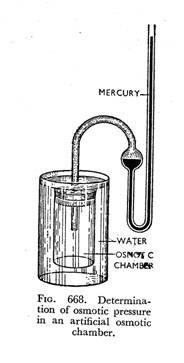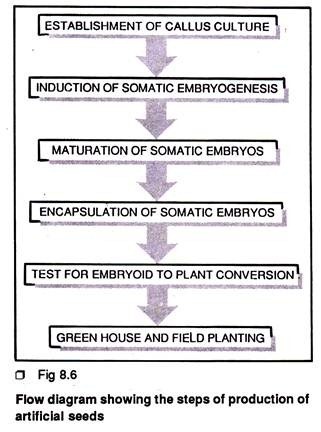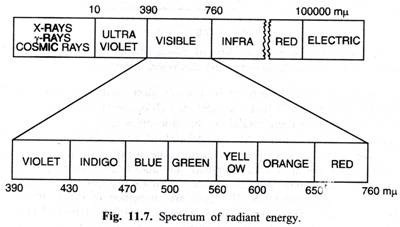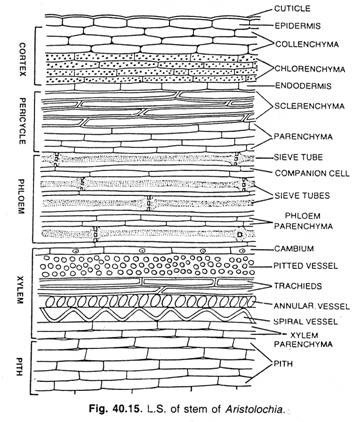ADVERTISEMENTS:
In this article we will discuss about:- 1. Definition of Operon 2. Features of Operon 3. Effector Control of Messenger Synthesis 4. Polarity 5. Modulation.
Definition of Operon:
In 1961 two Nobel laureates, Jacob and Monod, postulated the existence of new genetic unit, the operon to explain the integrated control of the action of genes in a biosynthetic pathway in bacteria. Operon is a group of closely related genes in the chromosome that can be controlled (i.e., activated or inactivated) in a coordinated way.
Although the same chromosomes are present in every cell in multicellular organisms, the strangest and unique situation is that all genes are not active in every cell at any given time. In chromosomal organisms, the genes concerned with successive steps in reaction chain appear, in general, to be scattered through the linkage groups.
ADVERTISEMENTS:
This is well-established for Neurospora crassa and Aspergillus nidulans, and is indicated, for instance, by the frequency of 9: 3: 3: 1 ratios (or modifications such as 9: 7) in the F2 generation in studies on the inheritance of anthocyanin pigmentation in flowering plants.
Both biochemical and autoradiographic studies suggest that the sequential gene activation (in the manner I-18C, IV- 2B, I-8A etc. of puff) goes hand in hand with the ontogeny particularly ecdysis of the Drosophila larva.
Besides the chronological succession, the phenomenon that genes could be induced to transcribe was very ingeneously proved by the action of ecdysone produced by the prothoracic gland.
Bacteria and viruses have similar systems whereby addition of metabolite or effector or end product may induce or repress the enzymatic synthesis by a DNA segment called “operon”.
ADVERTISEMENTS:
Operon is a linear group of integrated genes whose activity is coordinated by a functional gene operator which in turn is regulated by repressor released by the regulatory gene.
Salient Features of Operon:
i) A linked contiguous sector of DNA.
ii) When operator is opened every cistron of operon synthesizes mRNA for polypeptide synthesis. Synthesis stops when operator closes.
iii) Operator closer is due to cytoplasm repressor produced by regulatory gene.
iv) Activity of repressor is governed by metabolites or effectors.
v) There are two types of repressors:
a) In inducible system, repressor is inactivated by effector and enzyme synthesis initiates.
b) In repressible system, effector or end products close the operator and synthesis stops.
vi) Repressor acts negatively. When it is active no mRNA is synthesized and when inactive transcription occurs.
ADVERTISEMENTS:
vii) Repressor is a protein having two allosteric sites:
Site I has affinity for partial or total nucleotide sequence of cognate operator gene while Site II is affined to specific metabolite effector. Combination of repressor and effector at site II modifies the operator affinity of first site.
Effector Control of Messenger Synthesis in Operon:
i) That the presence of a particular effector increases intracellular concentration of specific mRNA of relevant operon can be proved by molecular hybridization with corresponding DNA either by heating and slow cooling of mixture of two polymers or upon passage of mRNA through special DNA agar gel.
ADVERTISEMENTS:
ii) Attardi and his collaborators (1963) considers the primary action of repression concerns the inhibition of messenger formation rather than the inhibition of messenger function.
iii) mRNA transcripts not a single cistron but the entire operon producing a single poly- cistronic messenger capable of synthesizing not a single polypeptide but the linearly arranged polypeptides encoded in an operon.
Polarity of Operon:
i) Franklin and Luria (1961) and Jacob and Monod (1962) found that some mutations in the β-galactosidase gene of E. Coli in addition to prevent the synthesis of this enzyme, gave rise to reduced rates of synthesis of the other two lactose enzymes belonging to the same operon. The cistron whose enzyme activity has been lost and in which the mutation can be mapped is always closer to the operator gene than the other cistrons.
ii) Beckwith (1964 b) showed that a class of mutants which Jacob and Monod called operator zero (0°) mutations, because they prevent the formation of all the enzymes of the operon to be polar mutants with the mutant site situated in the β-galactosidase gene near the operator and with exceptionally strong effects in lowering the levels of activity of the Y and a genes.
ADVERTISEMENTS:
iii) Beckwith (1964 a) discovered that some of the polar mutants of the lactose operon of E. Coli were suppressed by amber suppressors and were evidently polypeptide-terminating mutants. Extensive studies have since been made of the effects of such stop mutants in the lactose operon by Newton, Beckwith, Zipser and Brenner (1965).
iv) Zavin (1963) found that the rate of synthesis of one enzyme whose cistron is operator at distant is less than 1/10 th that of another whose cistron is operator at proximal.
v) Ames and Hartman (1963) think that polarity is due to the polycistronic messenger’s translation process which may come to a halt somewhere along the length before the last cistron is translated. Hence, the greater the distance from the operator, the lower is the amount of enzyme synthesis.
vi) Yanofsky and Ito (1966) discovered that two stop mutations present simultaneously in different genes of the operon showed polar effects independently, the percentage reduction in the relative rates of activity of distal genes caused by the second mutation being superimposed on the reduction resulting from the first mutation. On the other hand, two such mutations in the same gene behaved as if only one were present.
ADVERTISEMENTS:
vii) Zipser and Newton (1967) showed in an ingenious way that the gradient of polarity within a gene is dependent on the distance of the stop mutant from the distal end of the gene and not on the distance from the operator end.
Modulation of Operon:
Ames and Hartman (1963) used the term modulation for the genetic adjustment of relative rates of synthesis through coding for tRNA species of different abundance. If the right amino acetyl tRNA is rapidly available within the cell for incorporation into nascent polypeptide chain, the chance for continuing translation to the next amino acid residue is high.
If it is not readily available, chance is low. Because of the degeneracy of the genetic code we find different degree of availability of various t-RNAs for the same amino acid. If a codon switches by mutation from major to minor (i.e., from more abdundant to less abdundant) sRNA representative, corresponding change is noted.
For example, O0 (operator negative or out of order) may arise due to an entirely unavailable (presumably non-sense codon for s-RNA species. It may so happen that transcription may occur in such a manner that even if any protein is produced that could be nonfunctional as far as the operator effectivity is concerned.
The lactose (lac) operon of E. coli numbers represent the estimated number of base pairs of each gene. P, promoter; O, operator; i, regulatory gene. The best known operon is the Lac operon involved in the utilization of lactose.
ADVERTISEMENTS:
The Promoter:
The promoter (P) is the DNA segment to which the RNA polymerase first becomes attached to initiate the transcription of the structural genes. The promoter is a key regulatory element, since it controls the rate of mRNA synthesis of a given operon.
Both the structural genes and the i gene have their own promoter. Mutants of the i gene promoter which allow a fifty-fold over-production of the lac repressor have been isolated.
The Operator:
The operator is the segment of DNA upon which the repressor binds. The operator requires a close linkage with the structural genes under its control whereas the regulator gene (i gene) may be situated at a distance from them. The operator is situated at the left of the structural genes z, y and a.
ADVERTISEMENTS:
In this position the RNA polymerase that has attached to the promoter must first pass the operator before transcribing the structural genes.
If the operator is bound to the several mutations in the operon:
i) i– = no repressor synthesis (i.e., constitutive)
ii) F i–/i+= synthesis (due to transduction or F-duction).
is = super-suppressor and dominant on i+ and i–.
i–z–y+/Fi+z–y– and i–z–y+/Fi+z+y– inducible suggesting that repressor is a diffusible substance and is capable of acting in cis and trans position.
Cis Dominance of O:
May be supported by the following examples:
F = sex factor in bacterial strain to which exogenetic segment is attached.
Conclusion:
Although the molecular mechanism of evolution an establishment of any particular operon mimics the similar phenomenon in genetic code, since codons are concerned with very short segments of DNA, natural selection has played a paramount role in preserving virtually the same codes with as much efficiencies in amoeba as in homo sapiens.
Operon, in sharp contrast, due to the allignment of rather long nucleotide sequence had hardly such a selectee value, yet once such an arrangement was achieved, it was conserved immediately (as in viruses) and to a far fletched extent in homo sapiens.




